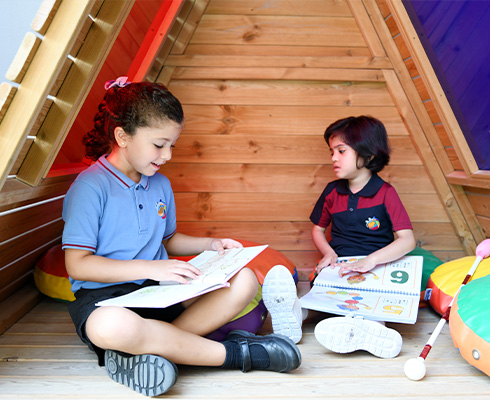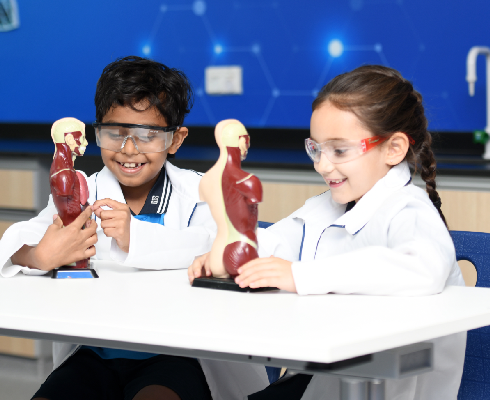
English Language Learning
The ELL team aims to empower students to learn the English skills necessary to function academically, thrive socially, and grow as multilingual global citizens. We guide students in strengthening language skills that will guide them in their journey towards accessing the mainstream curriculum. We are committed to providing English support to our vibrant community and love sharing in our diverse traditions and cultures to develop tolerance and understanding of our differences.
What is ELL Support?
English Language Learning Support is provided for those students who come to GIS with limited English language proficiency. Having a very diverse population, students come to GIS with a range of English skills: some need intensive English survival/ social skills, while others have learned the social language, but need support with literacy skills and academic language.
The school follows a graduated approach to ELL support and provides a range of support provisions. The ELL team works closely with classroom teachers to collaborate on the modification of tasks to enable students to access the mainstream curriculum and teachers may provide additional direct support within the classroom.
Support can come in many different forms:
- Pull out sessions that occur at least 4-5 times per week
- In class support (Push in sessions) that can occur 1-2 times per week
- Support students in completing tasks, increasing class participation, facilitate communication with peers and teachers; co-teaching
- Providing feedback to teachers on how to better support ELL students
- Continual monitoring and assessment of the 4 domains: listening, speaking, reading,
and writing
- External assessments include MAP (with accommodations for ELL students) and WIDA
- Internal assessments include Fountas and Pinnell benchmark assessments, high frequency words, words their way, phonics as needed, teacher anecdotal notes
- Collaboration with grade level teachers
How are students identified?
Students are identified through our admissions process. An interview and a WIDA assessment takes place. The WIDA gives us an overall proficiency level as well as a breakdown of the 4 domains of language: listening, speaking, reading, and writing. Homeroom teachers can also refer students to ELL. We investigate the student’s academic history, administer the WIDA assessment, and make a recommendation. Students below a 4.5 overall score or below a 4 in any of the 4 domains may need support. Triangulation of all data is essential for a recommendation to be made.
How do students exit?
The length of time the student is in the program varies depending on the student and his or her needs. Some simply need a settling in time period with guidance from the ELL teacher to support learning and growth. Others need more intensive support for up to 2 academic years. The ELL teacher along with the homeroom teacher triangulate the data and make a joint decision with the families. Data includes:
- WIDA (4.5 or above)
- MAP scores (need to demonstrate consistent sufficient growth)
- Reading level must be approaching grade level (as measured by Fountas and Pinnell)
- Writing assessment (measured by a rubric for the student’s grade; should be approaching grade level standards)
- Student’s ability to participate and complete tasks in class as well as communicate effectively with peers and teachers.
Students who exit the program are monitored for a year to make sure that the student is able to successfully manage his or her learning without any additional language support.
Dually identified students
Some students at GIS are also SD (students of determination). ELL teachers, homeroom teachers, and SD teachers work as a team to determine what is best for the student.
Initiatives
Two major initiatives began last year in PYP that we would like to continue and build on.
- Changed our exit criteria so that students aren’t released too early and found that they still need support. Using an adaptive approach, each student received the level of support he or she needed.
- We began monitoring ELL students in KG. Teachers identified students who needed differentiation because of English needs. This year, we would like to build on that and work with the KG team on a consultation basis. Being more involved in their collaborative planning meetings as a group of teachers or one on one in order to discuss the needs of the ELL students.
One initiative that we would like to trial this year is starting ELL passports for each student that would be shared with students and teachers identifying individualized strategies for that student. This can be used for reporting and to document the need for continuing support.



